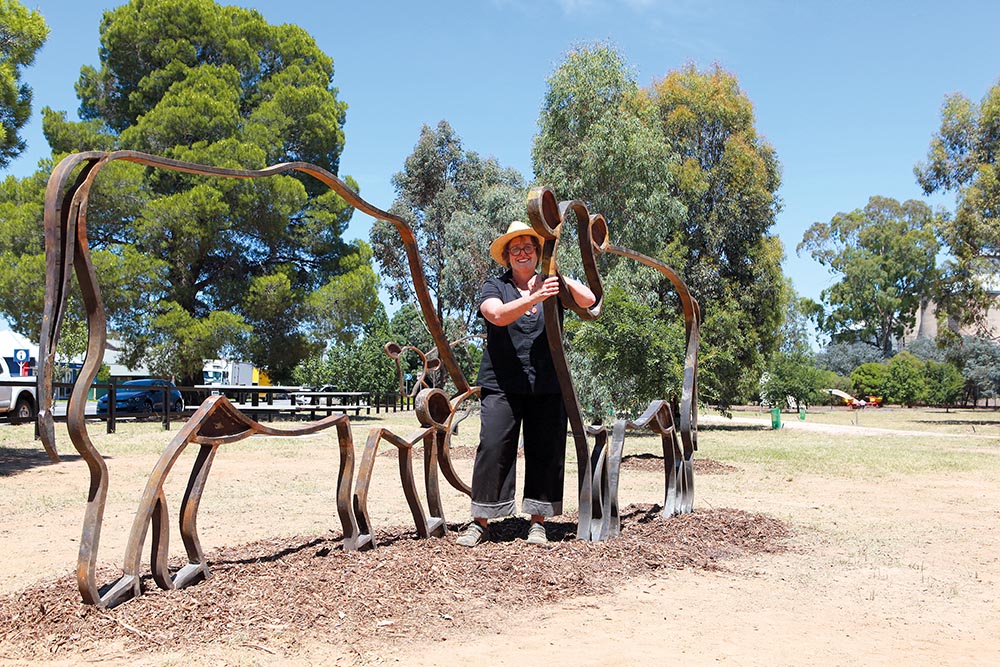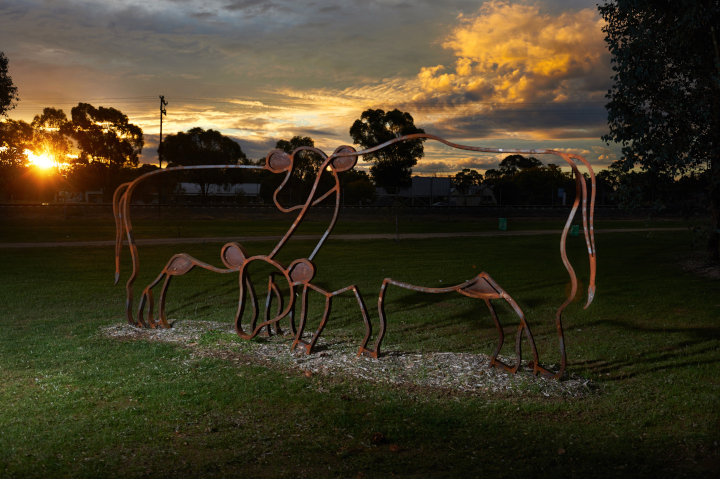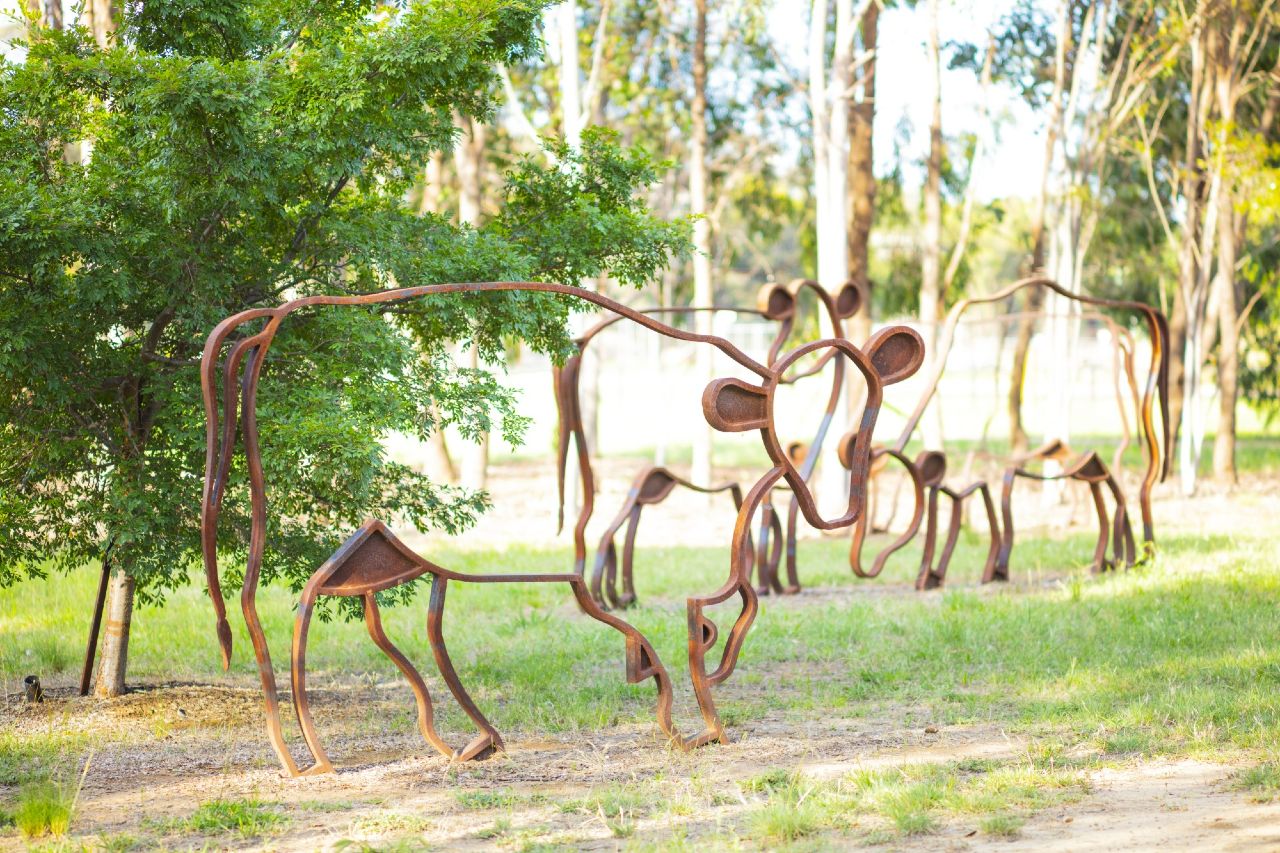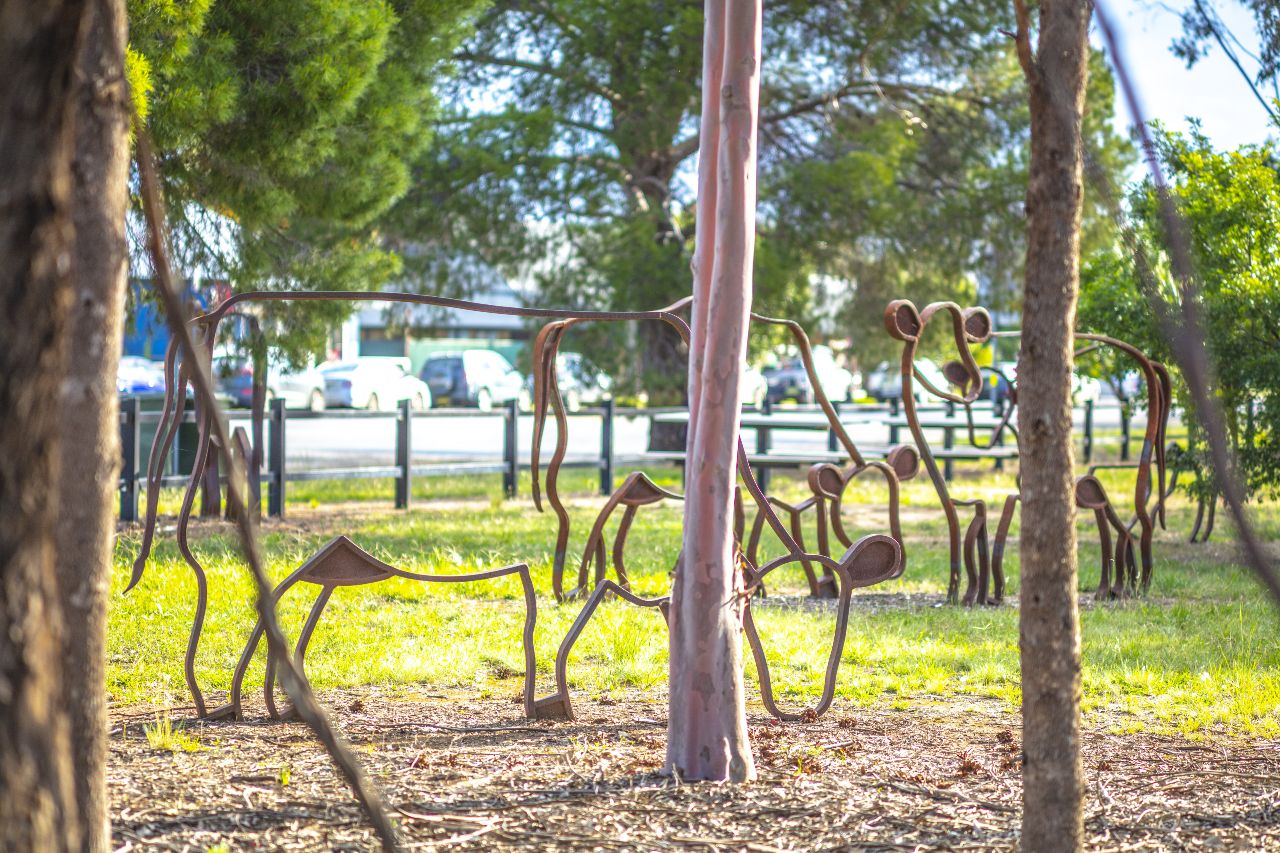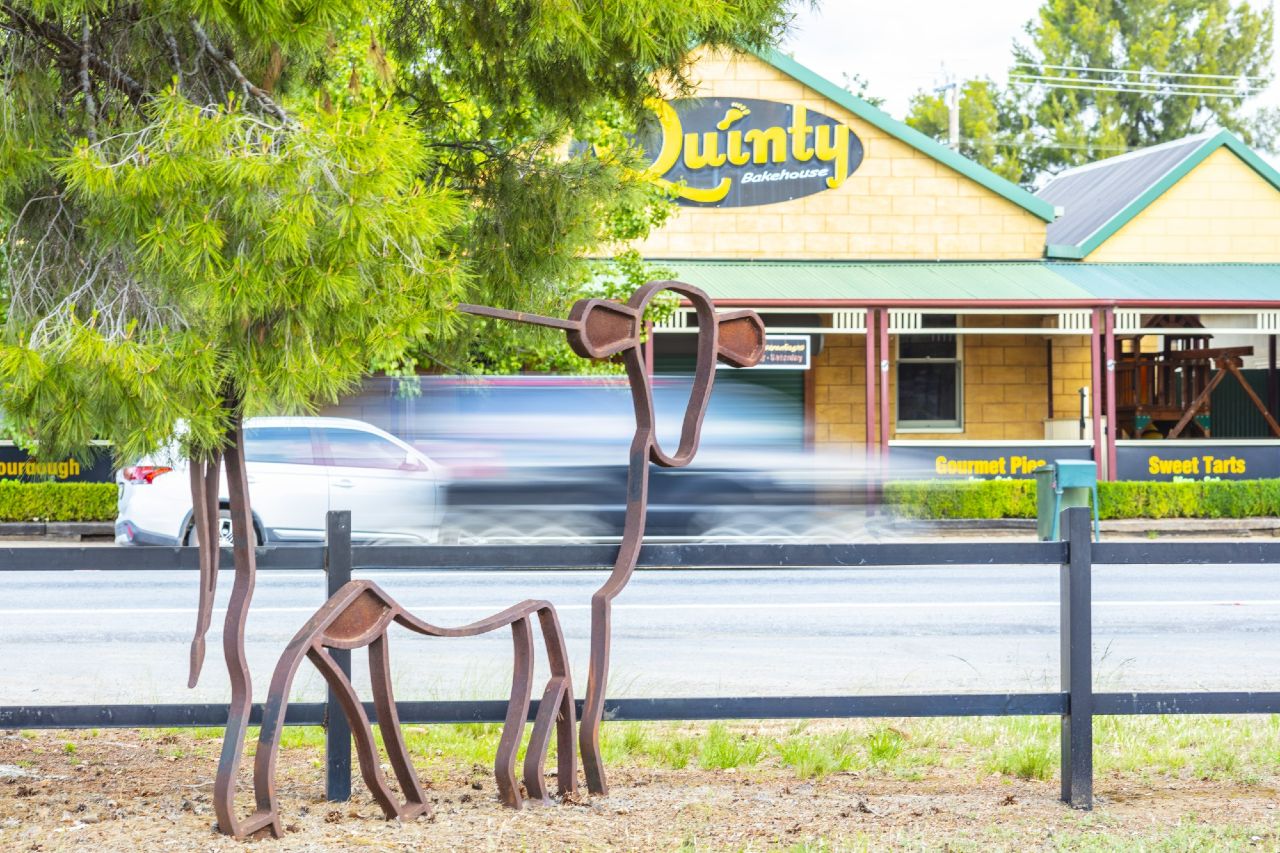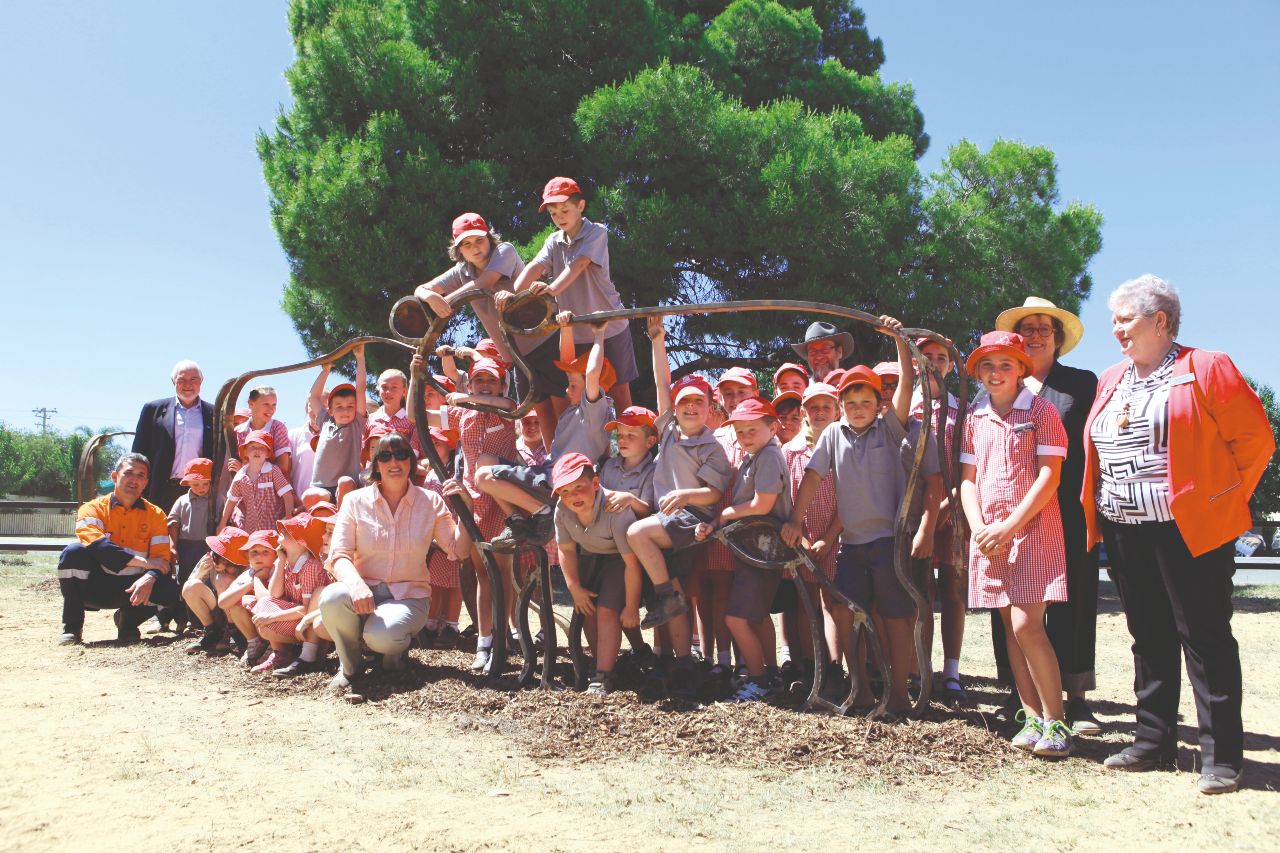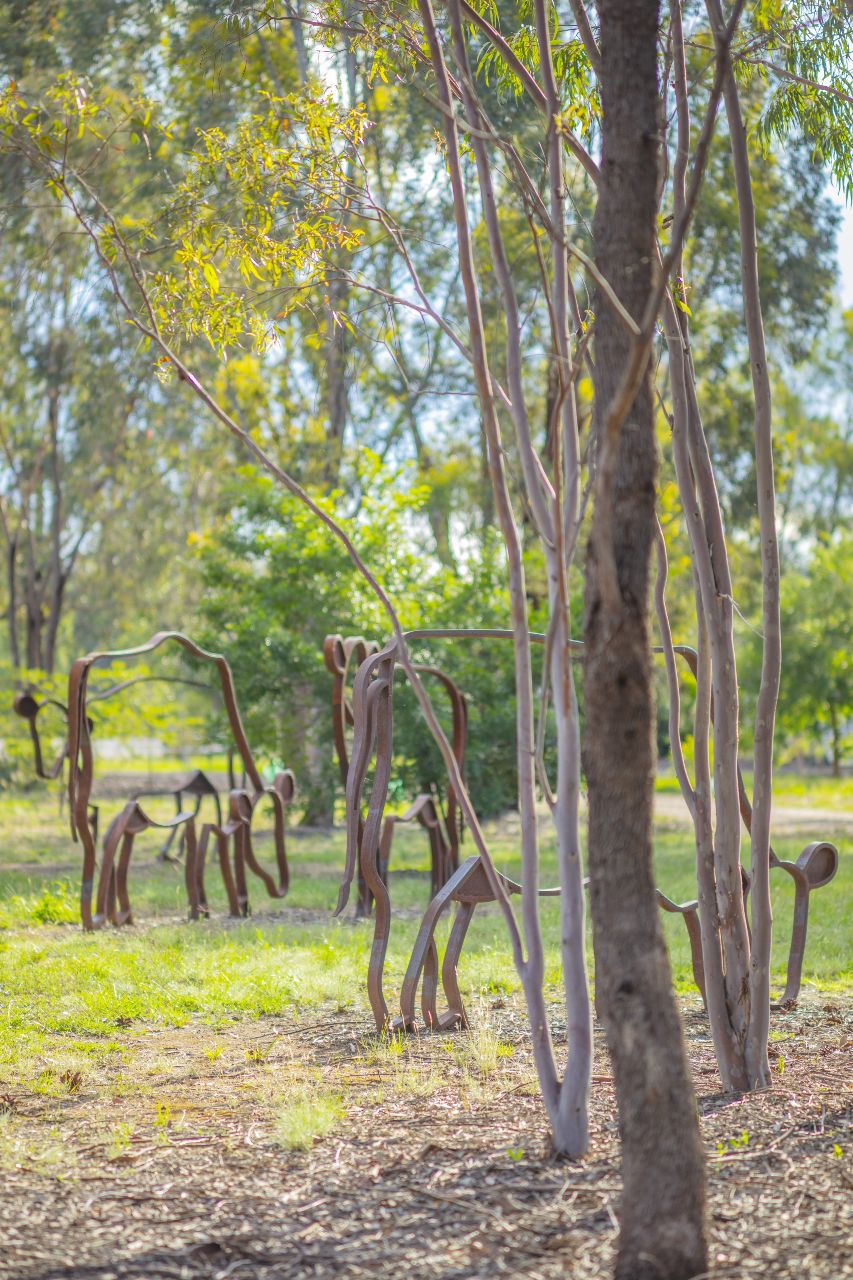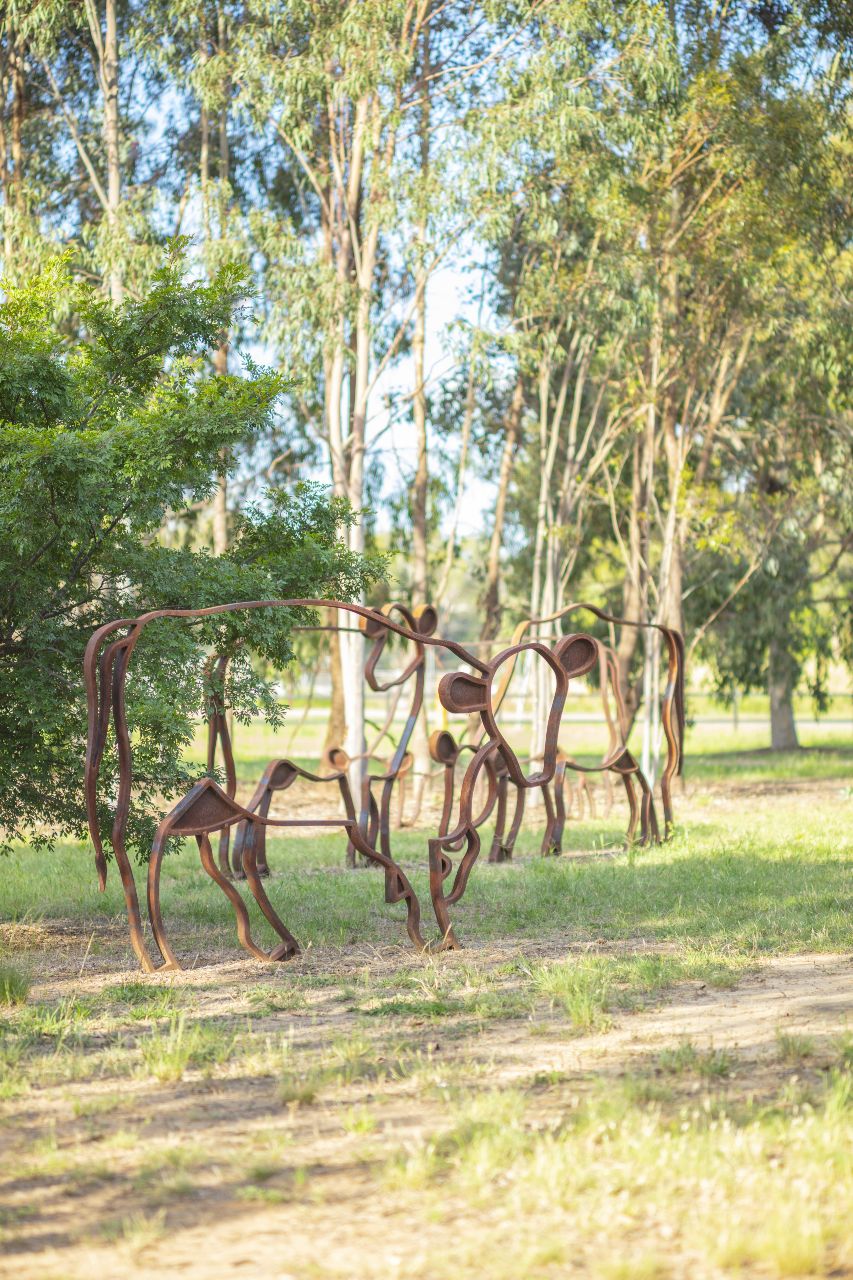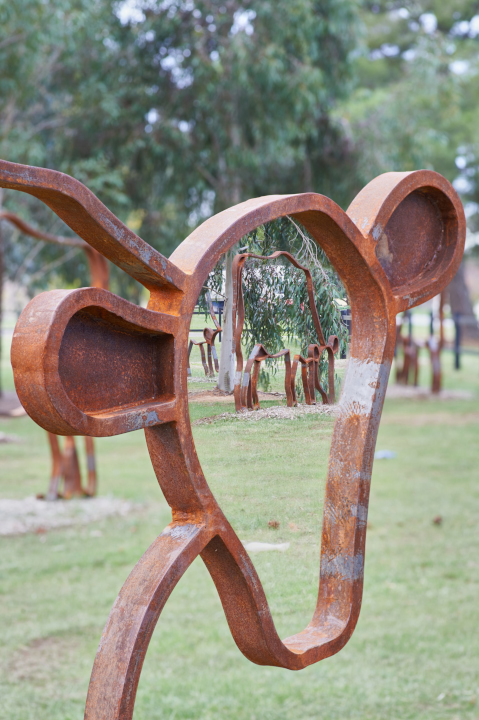Flatbar steel
Wirraway Park, Uranquinty
Public Art Audio Trail
Episode 7: Til the Cows Come Home
Audio visual description:
Acknowledgement spoken by Bernard Higgins.
Narration, content and interview by Ashleigh Adams.
Sound and music by Sam Webber Sound.
Public Art Audio Trail - Episode 7 Transcript - Til the Cows Come Home
Wiradjuri Acknowledgement of Country
gulbali-yanhi ngurambang-gu Wiradjuri-gu walumaldhaany-galang. nganha bala mayiny Wiradjuri. yindyamali-yanhi mudyiganggalan-bu balumbambal-bu balugirbam-bu yindyamali-yanhi bagaraygan nguarambang-gawali-i yandu muran wigi wagga wagga-dha.
Wagga Wagga City Council acknowledges the traditional custodians of the land, the Wiradjuri people, and pays respect to Elders past, present and future and extends our respect to all First Nations Peoples in Wagga Wagga.
A light guitar riff plays and continues to the end of the episode.
Narrator: This is Uranquinty’s favourite herd of cows standing in the centre of town enjoying a good old munch on some grass.
Sounds of cows mooing.
In 2015 Wagga Wagga City Council partnered with Origin Energy and the community of Uranquinty to commission a new public artwork.
These sculptures, called Til’ the Cows Come Home, were created in 2015 by artist Jane Cavanough and celebrate our regions’ important pastoral industry.
Jane loves to create works that have a relationship to the landscape where they are installed. Many of her works interpret the environmental and cultural aspects of each location she works in.
This quiet herd of ten hand forged steel cows grazing in the park inspire our curiosity. Their gentle shapes invite us to come closer and stand among them.
From different angles, you can see how their steel outlines resemble a line drawing that frames the surrounding landscape.
Their frame and hollow silhouette allude to a lingering presence that is neither lasting nor fading. Just like the trees and the rocks, the cows have become a part of this place.
Let’s hear from the artist Jane Cavanough about how this piece came together.
Narrator: How did you go about choosing cows as the subject matter?
Jane: Well cows are part of the agricultural or the pastoral economy of Wagga Wagga - beef cattle. And it was also a matter of working out what would look good at the scale it needed to be. When you’re designing artwork outdoors it always needs to be much bigger and cows provided that scope for doing something a little bit bigger. It also blended well with the landscape setting that was already there, it speaks to that area. It was a really appropriate idea to bring the cows in.
Narrator: These cows almost look like line drawings come to life, can you tell me a bit about your decision to leave these sculptures hollow?
Jane: Yes, I wanted the work to have a lightness about it. A line drawing is like sketching - outdoor sketching, so we’ve got that connection with sketching the landscape. And it creates much more of a lyrical position where the viewer can bring their own conversations or ideas into that work rather than being a literal rendition/3D rendition made out of solid sheet metal. It’s also very enticing because it brings the landscape right into the frame of the artwork. That’s really important to me, I do that quite a lot in my work. The other aspect is that it enabled me to make a herd of cattle rather than just two or three cattle for that budget if I was doing it in sheet metal. So there were a number of reasons, but the main one was bringing the landscape into the work and having a lightness about it.
Narrator: The cows are well-loved in the Uranquinty community with an annual decorating competition amongst locals. If you visit the cows around Christmas time you will see them decked out in their most festive wear with tinsel, baubles and santa hats.
Til the cows come home is part of the Wagga Wagga City Council Public Art Collection which extends throughout the Wagga Wagga LGA, including its villages. A visit to Oura, Tarcutta or Ladysmith will lead to the discovery of other artworks that celebrate our communities.
This podcast is produced by Wagga Wagga City Council with funding from the Australian Government’s Culture, Heritage and Arts Regional Tourism program.
Audio Description
This is a park with cows made of metal at its centre. A black post-and-rail fence separates the park from the road. The park is surrounded by eucalypts of various heights. The park is a large field on the right side of the fence. The ground is covered with green new-growth grass with bare clay-like patches or covered with leaf litter. A cement footpath runs between the garden and a patch of lawn, obliquely across the field. Beyond the park is a cyclone fence along a six-foot embankment which supports the railway line.
In the park are ten full-size cows which are man-made outlines in brown metal. Their ears, tails and udders are opaque but otherwise, they can be seen through. Like a real herd of cattle, some stand together while others have wandered within the park. Depending on the viewpoint, some cows can be seen through each other while others will be seen as a single curved line of metal. Some cows are positioned to be looking over the fence, while others have their heads down as if they are grazing on the grass.
Explore the Trail
This artwork is a part of the Public Art Audio Trail, follow the link below to see all the artworks on the trail.
About the Artwork
Wagga Wagga City Council partnered with Origin Energy to commission artist Jane Cavanough to create an installation that would appeal to travellers stopping for a rest and the local community. Jane chose cattle as they are a mainstay of agricultural life, in both Wagga Wagga and countrywide. Made from hand forged solid flatbar steel and standing 1.7m tall the 10 cows appear like line drawings and reflect the pastoral identity of the region.
Jane Cavanough produces site specific public art that is a union of both classic and contemporary design, interactive, low maintenance with long lasting beauty. Jane has degrees in both Landscape Architecture and Visual Arts and her strength is creating artworks that have a strong relationship to the site in urban, architectural and landscape settings.

